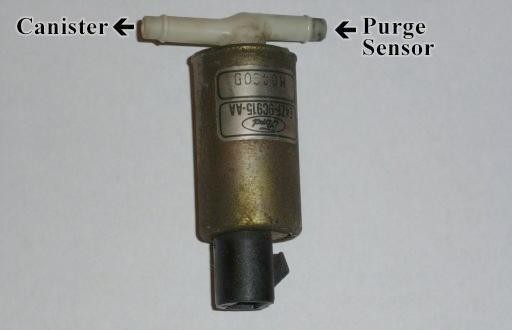The Obd2 Code P1443 indicates a problem with your vehicle’s Evaporative Emission Control (EVAP) system. This system prevents fuel vapors from escaping into the atmosphere. This article provides a comprehensive guide to understanding the P1443 code, its common causes, and how to diagnose and fix the issue.
What Does OBD2 Code P1443 Mean?
The P1443 diagnostic trouble code (DTC) specifically points to a problem with the EVAP system’s purge flow sensor or its circuit. This sensor monitors the flow of fuel vapors from the charcoal canister to the engine intake manifold. A malfunctioning sensor or a problem in its circuitry can trigger the P1443 code. This code often applies to Ford vehicles, particularly the Ranger, but can occur in other makes and models as well.
Understanding the EVAP System Components
Two key components are central to understanding the P1443 code:
1. The Purge Solenoid: This electronically controlled valve opens and closes the vacuum line between the charcoal canister and the engine intake. The Engine Control Module (ECM) commands the solenoid to open, allowing the engine to burn stored fuel vapors.
2. The Purge Flow Sensor: This sensor, often mistakenly called a solenoid, is a thermistor that measures the temperature change caused by airflow. It signals the ECM about the flow of fuel vapors. A faulty sensor can lead to inaccurate readings and trigger the P1443 code.
These components are connected by hoses, creating a pathway for vapor flow: a vacuum tap near the throttle body connects to the purge sensor, which connects to the purge solenoid, which finally leads to the charcoal canister.
Diagnosing OBD2 Code P1443
Several tests can help pinpoint the cause of the P1443 code:
1. Vacuum Hose Integrity: Check for cracks, leaks, or blockages in the vacuum hoses connecting the EVAP system components. Use a vacuum gauge connected to the hose from the throttle body vacuum tap to verify vacuum pressure (around 20 inches of mercury).
2. Purge Sensor Blockage: Disconnect the hose between the purge sensor and solenoid. Connect a vacuum gauge to the disconnected hose. With the engine running, the vacuum should be around 20 inches of mercury. A lower reading suggests a blockage in the sensor.
3. Purge Solenoid Functionality: Disconnect the hose from the charcoal canister. Apply vacuum to the hose and energize the solenoid using jumper wires connected to a 12V battery. The vacuum should change significantly when the solenoid is energized and de-energized.
4. Purge Solenoid Voltage Supply: With the key on, check for 12V at the solenoid connector using a multimeter. Absence of voltage indicates a wiring issue.
5. Purge Flow Sensor Operation: With the engine running and the hose between the sensor and solenoid disconnected, monitor the voltage on the sensor’s signal wire (black with light green stripe). Alternately covering and uncovering the hose end should cause noticeable voltage fluctuations, indicating a functioning sensor.
Conclusion
Troubleshooting the OBD2 code P1443 involves systematically checking the EVAP system components, starting with the vacuum hoses and progressing to the purge solenoid and flow sensor. These tests can help you identify the root cause of the problem and guide you towards the appropriate repair, whether it’s replacing a faulty sensor, repairing a broken hose, or addressing a wiring issue. Accurate diagnosis is crucial for effectively resolving the P1443 code and ensuring the proper function of your vehicle’s EVAP system.
